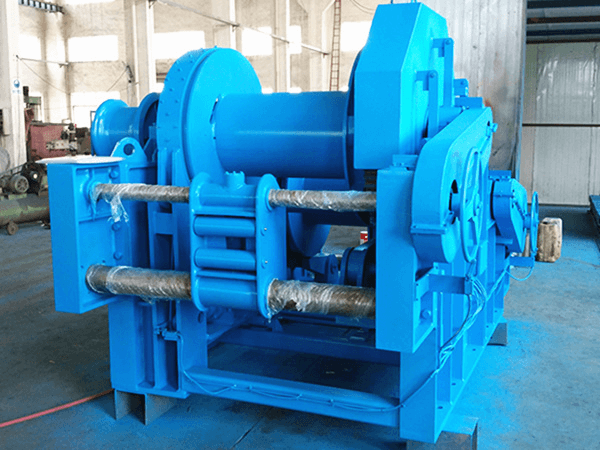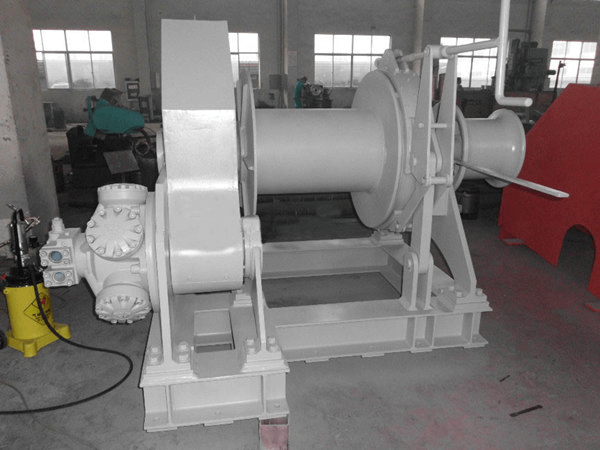Marine mooring winch English name is mooring winch, used for ship winch rope. It is mainly used for ships docking and two ships approaching. Generally, the linear speed of the winch is required to be 9-12m/min, and the rope length is 100-250m. Generally, those with lower rated pulling force choose electric ones, you can choose electric frequency conversion, or you can choose two-speed or three-speed. The hydraulic winch is selected for the larger rated pulling force, and the hydraulic winch starts smoothly and will not cause impact on the power supply system. Mooring winches generally only need close control.
The components of the mooring winch are: reel, reducer (the reducer generally needs to be equipped with a brake), hydraulic motor, valve block, and end support. The reel will be equipped with a rope press (optional), a rope arrangement (optional), etc.

The output torque of the hydraulic motor is determined by the displacement per revolution and the working pressure of the motor. Therefore, for a quantitative motor, as long as the working pressure of the hydraulic motor can be automatically controlled, the torque of the hydraulic motor can be controlled, and the tethering cable can be automatically adjusted. tension.
When mooring, the mooring winch is placed in the automatic state (the pump is running at this time), with the tightening of the cable, the tension increases, the working oil pressure P increases, and the progress of the cable retraction increases slightly with the increase of the internal leakage of the system. There is a decrease. When the working pressure is close to the set pressure Pn of the oil spill valve 2, the oil spill valve 2 is opened, and the retracting speed decreases rapidly at this time; when the set pressure Pn is reached, the cable tension reaches the rated tension FA, and the working oil Most of it returns to the tank, only a small amount of oil enters the hydraulic motor, maintaining constant pressure, the motor stalls, and the cable speed is 0.
When the cable tension increases to FB, the sum of FA and the friction force of the transmission mechanism is reached; when the tension is between FA and FB, the cable stops and the working oil pressure does not change. When the cable tension exceeds FB, the motor reverses and loosens the cable, and the motor drain oil from the inlet of valve 2 overflows back to the oil tank together with most of the working oil; if the cable tension further increases at this time, the working oil pressure further increases, The opening of the oil spill valve increases the amount of oil spilled, and the speed of loosening the cable is accelerated. At the same time, the spilled oil passing through valve 2 is sucked back by the motor, and the rest of the spilled oil flows back to the oil tank through the back pressure valve 5, which ensures that the motor suction port has a certain pressure, so that the suction pressure is not too low.

When the cable is automatically twisted, the maximum tension FB of the cable should not be higher than the allowable value of the cable strength, and the tension FA should meet the needs of the mooring operation. When the set pressure of the relief valve 2 is lowered or raised, the cable tensions FA and FB are correspondingly reduced or increased.
The above is a brief description of the working principle of hydraulic mooring winches. If you want to know more details about hydraulic winches, please contact us, we will provide you with the most comprehensive information.